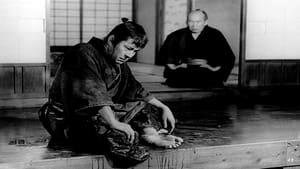Contact: [email protected]
Video Sources 0 Views

Synopsis
[ez-toc]




Introduction
In the vast tapestry of old films, there exists a timeless gem that has recently undergone a transformative revival. “Samurai Assassin Colorized 1965,” a classic black and white film directed by the legendary Kihachi Okamoto, has reemerged in a vibrant new form through the controversial art of colorization. In this article, we delve into the significance of this cinematic resurrection, exploring the historical context of the Meiji Restoration, dissecting the artistic process behind colorization, and celebrating the enduring legacy of the film’s key players, especially the iconic Toshiro Mifune.
Read Media File Transfer Agreement: Terms and Conditions
Read FAQ
The Meiji Restoration Era: A Turbulent Time in Japan’s History
To fully appreciate the impact of “Samurai Assassin Colorized 1965,” it’s essential to understand the historical backdrop against which it unfolds. Set during the tumultuous period of the Meiji Restoration in Japan, the film navigates through a society in the throes of transformation. The decline of the samurai class and the shifting political landscape under the Tokugawa government serve as the canvas upon which the film’s narrative is painted. The clash between tradition and modernity becomes a central theme, mirroring the societal upheavals of the time.
Film Analysis: Recoloring the Past in “Samurai Assassin Colorized 1965”
The decision to colorize a classic film raises questions about artistic integrity and historical preservation. In the case of “Samurai Assassin Colorized 1965,” the colorization process was executed with precision, breathing new life into scenes previously captured in shades of black and white. The controversial nature of altering the original artistic vision sparks a debate on the balance between preserving the authenticity of old movies and adapting them to contemporary tastes. The colorization of this film, however, adds a layer of accessibility, inviting a new generation of viewers to experience the story in a more immersive way.
The Cinematic Vision of Director Kihachi Okamoto
At the helm of “Samurai Assassin Colorized 1965” is the visionary director Kihachi Okamoto. Known for his unique storytelling techniques and bold directorial style, Okamoto’s contributions to Japanese cinema are monumental. His ability to capture the essence of the Meiji era while infusing a timeless quality into the narrative is evident in this film. Okamoto’s directorial prowess not only narrates a gripping story but also elevates “Samurai Assassin Colorized” to the status of a cinematic masterpiece.
Interpreting Honor and Tradition: Themes in “Samurai Assassin Colorized 1965”
At the heart of the film lies the samurai code of Bushido, exploring themes of honor, loyalty, and the internal struggle faced by warriors navigating a changing world. The narrative deftly weaves a tale of conflicting loyalties and the challenges of upholding traditional values in the face of societal evolution. “Samurai Assassin Colorized 1965” becomes a poignant exploration of the dichotomy between the old ways and the inevitable march of progress during the Meiji era.
The Global Reach of Toshiro Mifune: A Japanese Icon in World Cinema
Central to the success of “Samurai Assassin Colorized 1965” is the magnetic presence of Toshiro Mifune, a titan of Japanese cinema. Mifune’s portrayal of the conflicted samurai resonates with authenticity, marking him as one of the most celebrated actors in Japanese history. His collaboration with Kihachi Okamoto adds another layer of brilliance to the film. Mifune’s influence extends far beyond Japan, impacting Western filmmakers and contributing to the broader recognition of Japanese cinema on the global stage.
Critical Reception and Lasting Impressions: Assessing the Success of a Colorized Masterpiece
Upon its original release, “Samurai Assassin Colorized 1965” garnered critical acclaim for its compelling narrative and powerful performances. However, the decision to colorize a classic film often raises eyebrows within the cinephile community. Revisiting the critical reception of the colorized version, it becomes evident that the film has managed to bridge generational gaps. The once-controversial colorization process is now viewed as a gateway to introducing classic cinema to a new audience.
Preserving Cinematic Gems: Balancing Nostalgia and Technological Advancements
In an era dominated by technological advancements, the importance of preserving cinematic treasures cannot be overstated. The delicate dance between film preservation and technological enhancements is exemplified in the case of “Samurai Assassin Colorized 1965.” While purists may argue in favor of maintaining the sanctity of the original black and white version, the colorized adaptation serves as a crucial bridge, ensuring the film’s longevity and accessibility for future generations. Digital restoration techniques play a pivotal role in maintaining the integrity of classic movies, allowing them to shine in new formats without compromising their essence.
The Enduring Appeal of “Samurai Assassin Colorized 1965” in Living Color
As we witness the resurgence of “Samurai Assassin 1965” in living color, it becomes evident that the film’s appeal extends beyond nostalgia. The colorized version breathes new life into the narrative, inviting contemporary audiences to engage with the story in a way that transcends the limitations of its original format. The vibrant hues not only enhance the visual experience but also provide a fresh perspective on the film’s thematic depth. To fully appreciate the artistic evolution of “Samurai Assassin 1965,” one must embrace both the original and colorized forms, recognizing the unique qualities that each brings to the table.
In conclusion, the colorized resurrection of “Samurai Assassin 1965” stands as a testament to the delicate balance between preserving cinematic heritage and embracing technological advancements. As the film continues to captivate audiences in its rejuvenated form, it reaffirms its status as a timeless masterpiece, transcending the boundaries of time and captivating new generations with its tale of honor, tradition, and the ever-shifting sands of history.













